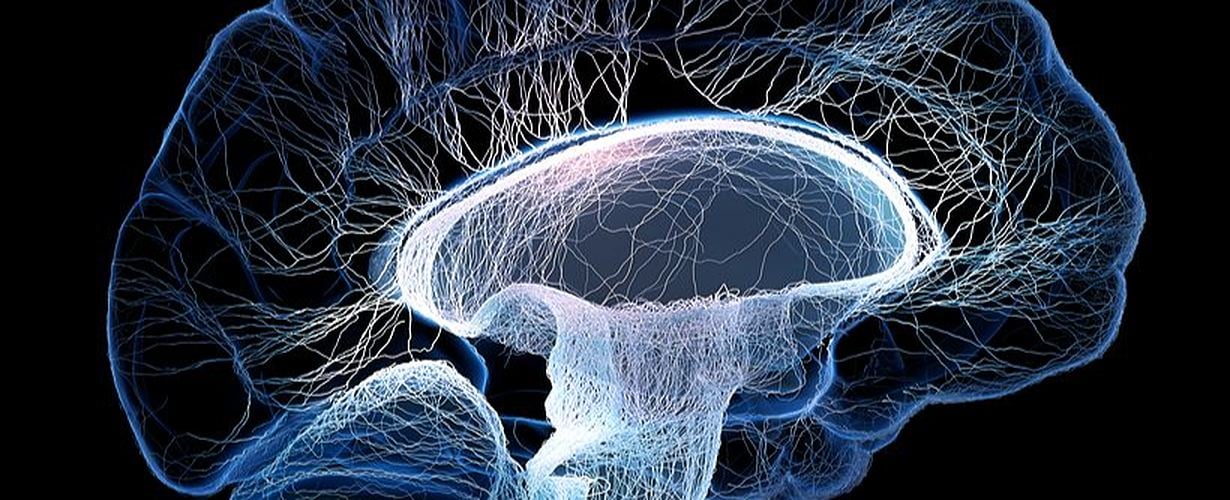Neuroplasticity, Emotional Healing, and Chronic Illness
Research shows that chronic psychological stress, such as that triggered by adverse childhood events (ACEs), triggers adverse changes in neuroplasticity. Chronic infections and exposure to toxins, such as mercury and mold, cause inflammation and can damage the brain. For decades, the medical and scientific communities viewed these changes as irreparable, leaving countless patients feeling lost and without hope. However, over the past few years, our understanding of brain injuries has evolved dramatically. We now know that the brain has a tremendous capacity for repair and renewal, if it is given the right tools to do so. The primary mechanism through which the damaged brain can repair and restore itself is called “neuroplasticity.” Read on to learn how neuroplasticity can be harnessed to promote brain repair and aid your recovery from chronic illness.
What is Neuroplasticity?
For decades, the structure and function of the adult brain was thought to be immutable; in other words, once you had reached a certain age, you could no longer “change your mind.” However, in recent years, this theory has been disproven through the discovery of a profound phenomenon called “neuroplasticity.”
Neuroplasticity is defined as the ability of the brain to form and reorganize the synaptic connections between neurons. Neuroplasticity is an essential component of the learning process and of the brain’s response to injury, including traumatic brain injury (TBI) and stroke. Essentially, neuroplasticity refers to the brain’s ability to “rewire” itself in response to new experiences and information.
Neuroplasticity is a two-way street; stressful, traumatic experiences impact neuroplasticity, causing the brain to develop and repeatedly utilize maladaptive pathways that are not conducive to optimal health. Conversely, neuroplasticity can also be harnessed in beneficial ways to help individuals overcome stressful and traumatic experiences. Shortly, we will discuss a few strategies that can be used to support positive neuroplastic changes and aid in healing from the stress and trauma of Lyme disease.
Chronic Illness Causes Direct Brain Damage & Activates the Limbic System
If you’ve struggled with neurological Lyme symptoms or brain fog, mood changes, and memory impairment from mold exposure, then you’ve experienced firsthand the impact of chronic illness on the brain.
Chronic infections and toxic exposures directly harm the brain. Borrelia burgdorferi, one of the borrelial species responsible for Lyme disease, has been found to cause the release of inflammatory molecules from glial cells, cells in the brain that provide support and protection for neurons.1 These potent inflammatory mediators trigger neuronal death and may explain some of the neurological symptoms of Lyme disease. Importantly, this cellular damage can show up on brain imaging like MRI as “white matter lesions” or “hyperintense lesions,” and indicates brain inflammation and damage to small blood vessels and nerves in the brain.
Mycotoxins, or the toxins produced by harmful mold species, also directly harm the brain by binding to proteins involved in neuroplasticity, impairing the brain’s ability to form healthy neuronal connections.2
Chronic stressors, including infections and toxic exposures, also adversely impact brain function by activating the limbic system. The limbic system is a set of structures in the brain that help us detect threats to our safety and wellbeing. In a healthy individual, the limbic system responds appropriately to acute threats, such as the aggressive driver who just cut us off on our way to work, but quickly returns back to a calm, unthreatened state once the event has passed. However, in the case of chronic illnesses, many of us end up with a limbic system that is chronically activated or “turned on.” Infections and ongoing toxic exposures in our environment, such as mold, flip the switch on your limbic system, telling your body that it is in danger and must constantly be on the lookout for threats to your health. Over time, this can cause your body to react inappropriately to non-threatening things, including foods, herbal supplements, or environmental pollutants. These unproductive reactions make Lyme disease recovery difficult by causing the body to reject supplements, medications, foods, and nutrients that it needs to heal.
Brain retraining programs offer a way to calm an overactive limbic system, rewiring the brain so that it prunes away harmful neural pathways and creates new, healthy pathways.
Brain Retraining Programs Promote Neuroplasticity
In recent years, a variety of brain retraining programs designed to restore healthy brain function have emerged. These programs are based on the premise that when the brain and nervous system are provided with the right stimuli, they can create new neural pathways, restoring healthy function to a previously dysfunctional system. In our experience, these programs can be tremendously helpful for restoring healthy brain and limbic system function in the context of Lyme disease. The “stimuli” provided by these programs include exercises, such as visualizations and body movements, that train the brain to discard harmful, dysfunctional neural pathways and create healthy new pathways.
At CCFM, we recommend brain retraining programs to most of our Lyme patients. Several of these programs are described below:
DNRS
The Dynamic Neural Retraining System (DNRS) is our go-to program for restoring neuroplasticity and aiding recovery from complex chronic illness. Developed by Annie Hopper, DNRS integrates components of cognitive behavioral therapy, cognitive reappraisal, and behavior modification therapy to help individuals downshift their chronic stress response, change thought patterns, and retrain their brains to respond in a more balanced manner to stimuli, ranging from foods to medications to chemicals.
A recent retrospective study conducted at McMaster University suggests that DNRS is effective for improving quality of life, fatigue, environmental sensitivities, anxiety, and depression in individuals with an array of complex chronic illnesses, including fibromyalgia and chronic fatigue syndrome.
The Work of Dr. Joe Dispenza
Dr. Joe Dispenza is a neuroscientist whose work has been pivotal in shaping the field of brain retraining. On his website, he offers guided meditations, books, and training resources that teach you how to harness the power of neuroplasticity to change your brain and the health of your entire body.
EFT/Tapping
The Emotional Freedom Technique (EFT) is another powerful neuroplasticity tool to add to your Lyme disease recovery program. Similar to acupuncture, EFT targets points along the body’s meridians, which are pathways through which energy flows in the body. However, instead of inserting tiny needles into these points as one would with acupuncture, EFT has you tap your fingers gently on these points. This process is believed to help restore the body’s energy balance; the mechanism of action is not fully understood, but may involve neuroplastic changes in the brain.
The tapping sequence in EFT uses eight points on the face and body. At the beginning of an EFT session, the individual identifies a concern or issue and rates his or her level of distress on a scale of one to ten. Next, the individual states the problem or concern in a “setup statement,” which may sound something like “Even though I have this problem (eg, fatigue from Lyme disease), I deeply and completely accept myself.” The individual then focuses on the health problem, or a shortened version of it, while tapping through the eight-point sequence. The sequence is repeated as many times as necessary until the individual’s subjective level of distress on the ten-point scale is as low as possible.
Excitingly, recent research indicates that EFT improves multiple physiological markers of health, including serum cortisol levels, heart rate variability (HRV), and secretory IgA, a marker of immune function. HRV is the variance in time between the beats of your heart that can be used to gauge the balance between your sympathetic and parasympathetic nervous system responses.3 These markers are of great relevance in the healing of Lyme disease, since a stressed-out body with chronically elevated cortisol levels, excessive sympathetic nervous system activity, and insufficient secretory IgA will be unable to access the parasympathetic state and immune activation necessary for bodily healing.
If you are interested in trying EFT, we suggest that you pick up a copy of the book The Tapping Solution: A Revolutionary System for Stress-Free Living. There is also an excellent, easy to use smartphone app available. Our colleague, Amy Sher, also has a wonderful online course.
HBOT
Hyperbaric oxygen therapy (HBOT) is another powerful modality for supporting neuroplasticity. HBOT is a medical treatment in which a person is placed into a chamber saturated with 100 percent oxygen. Saturating the body with pure oxygen in this manner offers profound healing effects by bringing oxygen-rich blood to tissues that are oxygen-deprived and require more oxygen for healing.
HBOT is traditionally used for the healing of carbon monoxide poisoning, gangrene, and stubborn infections. However, recent research suggests that it also aids brain healing after both psychological and physiological trauma by promoting oxygen-rich blood flow and repair mechanisms in the brain, including enhanced neuroplasticity.4,5 Perhaps one of the most exciting takeaways from HBOT research is that HBOT can improve brain function via neuroplasticity mechanisms many years after the initial trauma occurred.
Meditation and Mindful Movement
Meditation and mindful movement practices, including yoga and Qi Gong, can also facilitate brain and body healing by lowering limbic system activation, enabling the body to enter the parasympathetic “rest, digest, and repair” state that is so essential for healing. At CCFM, we have an online Qi Gong program available to patients that can be incorporated into your treatment approach.
There are numerous forms of meditation, ranging from the Mindfulness Based Stress Reduction (MBSR) techniques founded by Jon Kabat Zinn to Vipassana meditation, an ancient form of meditation that rose out of the Buddhist traditions in India.
For meditation newbies (and meditators of any level seeking a guided meditation experience) meditation apps can be helpful. A few of our favorites are Buddhify, Calm, Waking Up, and Headspace.
Polyvagal Theory and the Work of Stephen Porges
The Polyvagal Theory, developed by psychiatrist Dr. Stephen Porges, posits that appropriate parasympathetic nervous system activity, particularly the activity of its main nerve, the vagus nerve, is essential for promoting the growth, health, and regeneration of the body. As a refresher, the parasympathetic response comprises the calming aspect of the autonomic nervous system while the sympathetic response is the activating aspect. However, the Polyvagal Theory also considers a third aspect of the nervous system called the “social engagement system,” which is a mixture of activation and calming signals.
According to Polyvagal theory, a variety of environmental cues can either positively or negatively affect the neural circuits in the autonomic nervous system, including the parasympathetic, sympathetic, and social engagement systems.6 Trauma, including the emotional trauma of chronic illness, causes us to live in a state of chronic sympathetic “fight or flight” activity, creating hypervigilance, or can adversely affect the social engagement system, causing emotional shutdown. Conversely, activating the vagus nerve tones the social engagement system, initiating reparative processes in the body.
The Polyvagal Theory holds important implications for people recovering from chronic illnesses, including Lyme disease. If you are in a chronic sympathetic state, your vagus nerve and downstream healing processes cannot and will not be activated; as a result, your healing process may remain at a standstill. Conversely, accessing the healing power of your vagus nerve can exert powerful healing effects.
So, how can you capitalize on the Polyvagal Theory and support healthy vagus nerve function? One way is to do the simple exercises outlined in Stanley Rosenberg’s book on the topic, “Accessing the Healing Power of the Vagus Nerve: Self-Help Exercises for Anxiety, Depression, Autism, and Trauma.” Other forms of mindful movement may also support the vagus nerve, including yoga and tai chi.7,8
You Can Heal Your Brain
There exists an exciting array of modalities for supporting neuroplasticity and whole-body healing in the context of Lyme disease. Interested in learning more about neuroplasticity? Check out the following books for more information:
- The Brain That Changes Itself by Dr. Norman Doidge
- The Brain’s Way of Healing by Dr. Norman Doidge
- Evolve Your Brain by Dr. Joe Dispenza
- Breaking the Habit of Being Yourself by Dr. Joe Dispenza
- You Are The Placebo: Making Your Mind Matter by Dr. Joe Dispenza
References
- Ramesh G, et al. Interaction of the Lyme disease spirochete Borrelia burgdorferi with brain parenchyma elicits inflammatory mediators from glial cells as well as glial and neuronal apoptosis. Am J Pathol. 2008; 173(5): 1415-1427.
- Scafuri B, et al. Binding of mycotoxins to proteins involved in neuronal plasticity: a combined in silico/wet investigation. Sci Rep. 2017; 7: 15156.
- Bach D, et al. Clinical EFT (Emotional Freedom Techniques) improves multiple physiological markers of health. J Evid Based Integr Med. 2019; 24: 2515690X18823691.
- Hadanny A, et al. Hyperbaric oxygen therapy can induce neuroplasticity and significant clinical improvement in patients suffering from fibromyalgia with a history of childhood sexual abuse-randomized controlled trial. Front Psychol. 2018; 9: 2495.
- Boussi-Gross R, et al. Hyperbaric oxygen therapy can improve post concussion syndrome years after mild traumatic brain injury - randomized prospective trial. PLoS One. 2013; 8(11): e79995.
- Porges SW. The polyvagal theory: New insights into adaptive reactions of the autonomic nervous system. Cleve Clin J Med. 2009; 76(Suppl 2): S86-S90.
- Sullivan MB, et al. Yoga therapy and Polyvagal Theory: The convergence of traditional wisdom and contemporary neuroscience for self-regulation and resilience. Front Hum Neurosci. 2018. https://doi.org/10.3389/fnhum.2018.00067.
- Tai HC, et al. Effect of Tai Chi Synergy T1 exercise on autonomic function, metabolism, and physical fitness of healthy individuals. Evid Based Complement Alternat Med. 2018; Article ID 6351938. https://doi.org/10.1155/2018/6351938.






